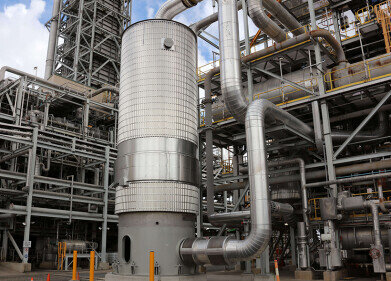Air Clean Up
Urban Natural Burial Sites Could Reduce Overcrowding and Fight Pollution
Jan 13 2014
Academics are calling for natural burial sites to be built in cities to give residents and visitors more green space, help improve air quality and the environment and respond to a shortage of burial spaces.
Rather than a headstone, relatives would select a tree or a bird box as memorialisation. A GPS tagging system would enable their loved one’s body to be clearly located on site, so that memorialisation could continue as a personal ceremonial act.
Ian Fisher, a senior lecturer in landscape architecture at The Manchester School of Architecture, and Ann Sharrock, a freelance landscape architect, who studied for the Bachelor of Landscape Architecture at MMU and researched natural burial sites for her final year project, suggested that people could be buried in a network of urban woodlands, which would be an integral part of urban green infrastructure.
Improving the environment
Tree species would be selected for their tolerance of urban conditions, absorbing gaseous and other particulate pollution, as well as contributing to increasing urban humidity, providing shelter, reducing peak run off flows, increasing biodiversity and improving the mental health and wellbeing of residents and visitors.
Ian said: “Over the next 20 years half the country’s burial sites will be full up, and a quarter of towns who replied to a survey said they would run out of space within 10 years. It is a serious problem as is the problem of poor air quality, enhanced heat islands in cities, recycling rainwater and other environmental issues. We asked, how can we put these together?”
Ian and Ann put the idea forward at an Urban Forestry Conference, in Estonia, and are following it up with an article in The Journal of the Landscape Institute.
Ian said: “This is an interesting way to combine principles of urban forestry and natural burial thinking. Initially they seem to be two very separate issues, but they could be combined to solve several problems.
Demystifying death
While the burial service would be a non-secular ceremony, the space subsequent to this act would provide a secular surface, a place of tranquillity, escape, contemplation and community focus. The absence of formal reminders of the paraphernalia associated with death, might help address people’s hesitancy to enter cemeteries as well as reduce the burden of expensive caskets and headstones for those who least can afford it.
Ian added that “through their association, these spaces would generate respect and responsibility, as well as encourage a greater social acceptance of death.
“This would bring death into daily life, which is one of the last great taboos, and go a long way towards demystifying it,” he said.
Ann, who was commissioned by the Felix Dennis Estate to design a natural burial site in Warwickshire, said: “We want to reframe death spaces as places that provide services to the living and restore some balance to the city’s landscape emphasising a concern for our impact on the earth.”
Ian said: “We hope to raise awareness of some important issues and start a debate about how we deal with both the health of cities and burial.”
Events
May 23 2024 Beijing, China
May 23 2024 Beijing, China
Jun 10 2024 Algiers, Algeria
Jun 10 2024 Frankfurt, Germany
Singapore International Water Week | Water Expo
Jun 18 2024 Singapore














